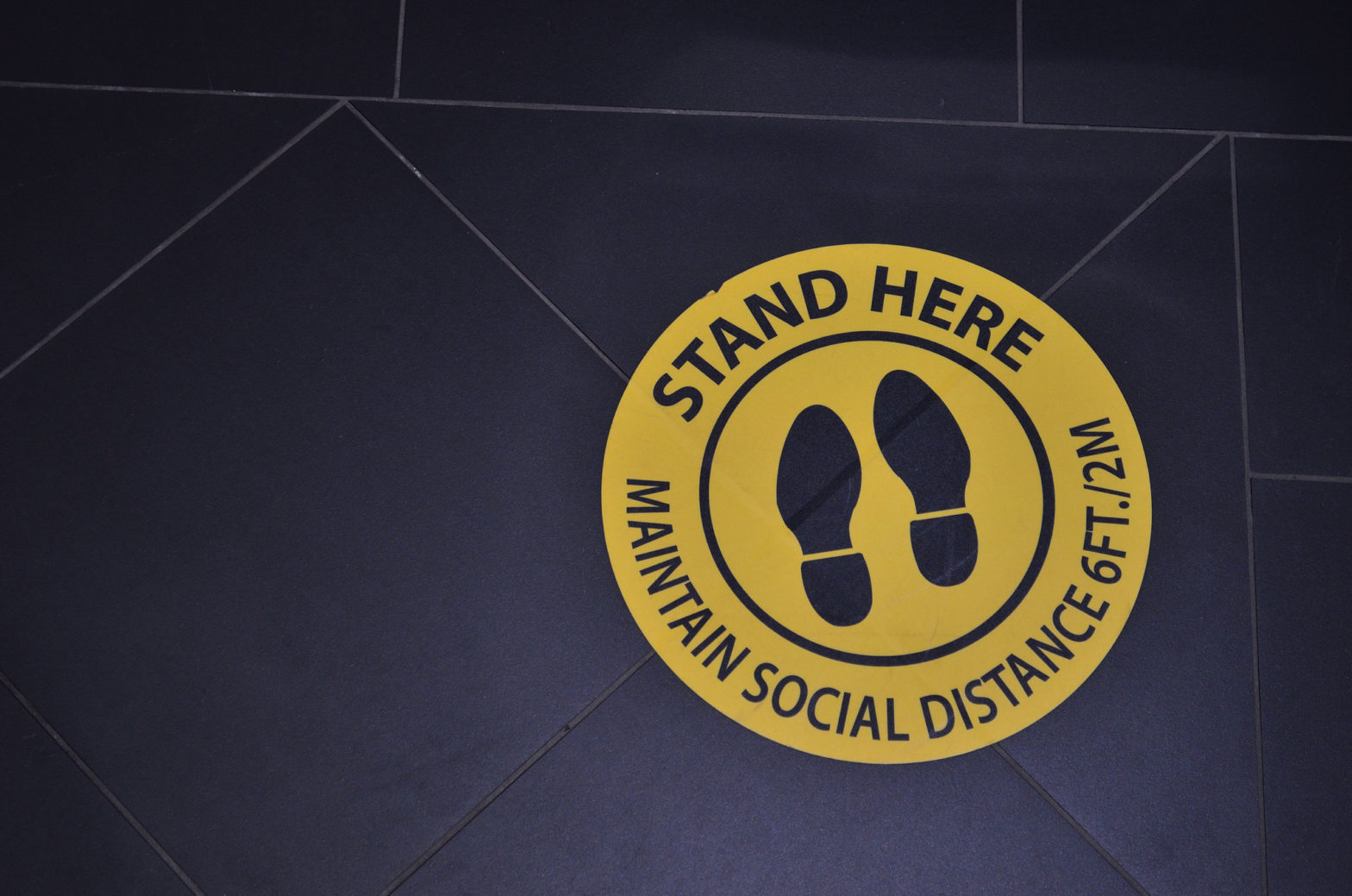The other day, Jon Hardister a Republican member of the North Carolina House of Representatives, Tweeted his summary of a working paper from November, 2020. That paper analyzed the tone used in U.S. media coverage of Covid19. The paper maybe of interest, but Hardister didn’t link to the paper, he just Tweeted the following:
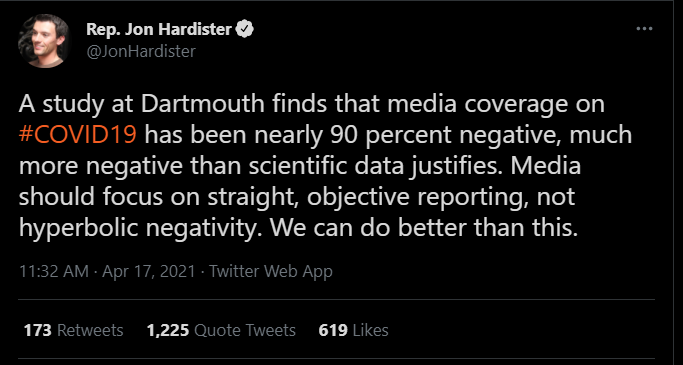
“A study at Dartmouth finds that media coverage on #COVID19 has been nearly 90 percent negative, much more negative than scientific data justifies. Media should focus on straight, objective reporting, not hyperbolic negativity. We can do better than this.”
The Tweet is both decontextualized from the original paper and not the best representation of the paper’s content. The paper analyzes the tone of English-language news articles written from January 1, 2020 until some time in November of 2020. The finding is that 91% of stories by U.S. major media outlets are negative in tone versus 54% for non-U.S. major sources and 65% for scientific journals.
The paper isn’t all that interesting to me — it also foolishly speculates that the 1987 repeal of the fairness doctrine may have something to do with the amount of negative coverage in the U.S. Despite the fact that the fairness doctrine would have only applied to 4 of the 14 media companies selected as U.S. mainstream sources. — Even the comparative metrics of the more positive tones used by non-U.S. major sources and scientific journals have explanations besides simply “U.S. Media is being a negative nelly.”
For example, while it may be changing, scientific journals don’t publish negative findings as frequently as positive findings. This doesn’t speak to the tone, but if a test, trial, or experiment works, it’s more likely to be published in scientific journals. For non-U.S. major sources, it also may be easier to be positive when you do not have to debunk a leader who claims Covid19 will disappear one day like a miracle… Even the non-U.S. outlet The Irish Times was very negative about Donald Trump’s handling of Covid19 in 2020.
As you can probably imagine, Hardister’s Tweet wasn’t well received. Without a link to the study for context, the Tweet carries the implication that if media coverage of a pandemic that’s killed over 3 million people were objective it wouldn’t be so negative.
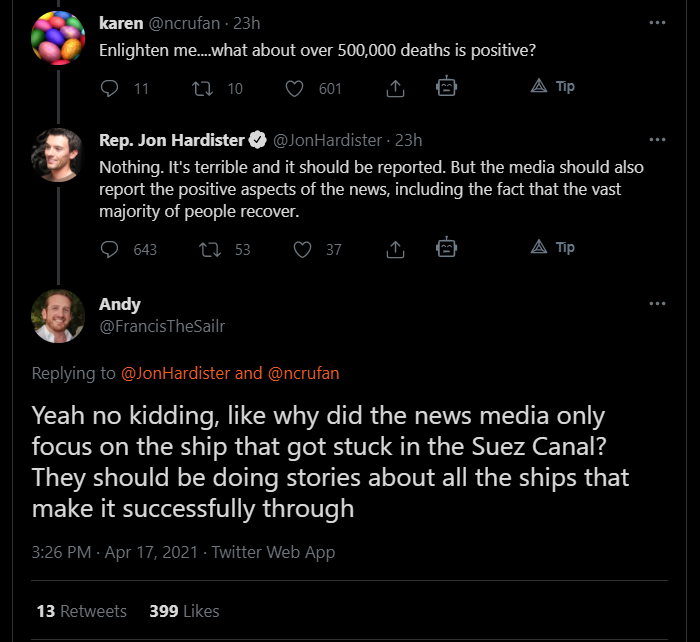
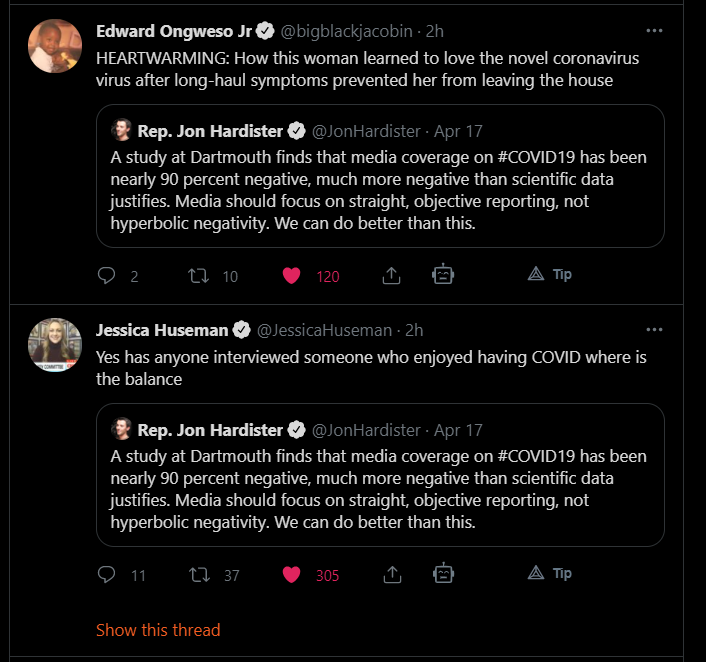
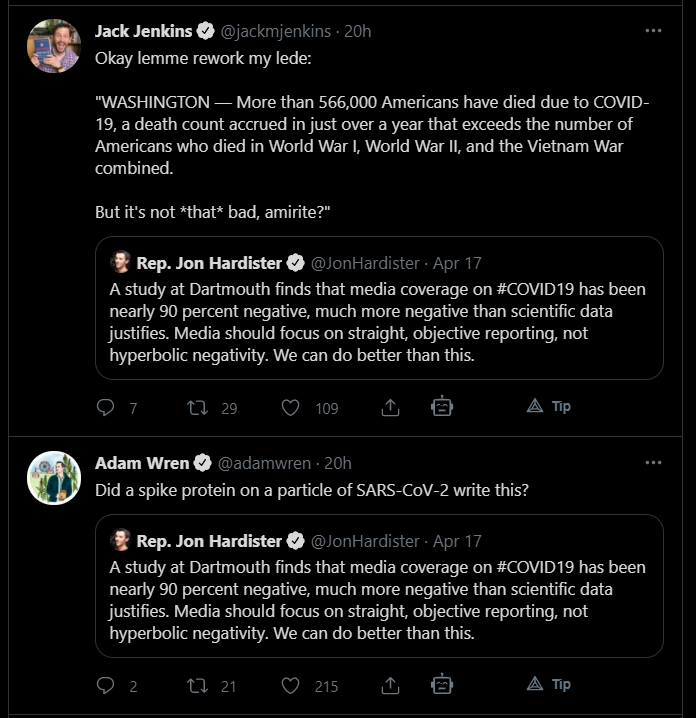
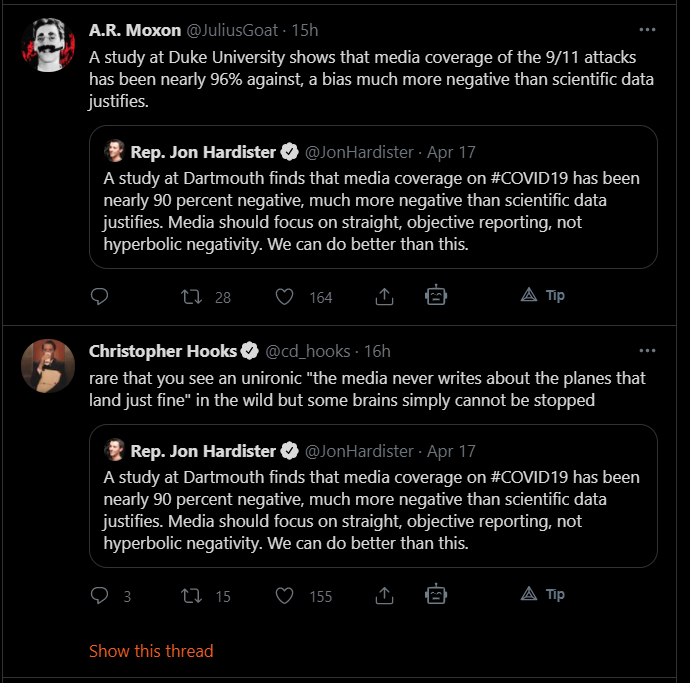
I, however, got the honor and privilege of having someone claim that negative media coverage caused actual harm. They said negative media caused the “suppression of treatment options.” — Specifically citing Hydroxychloroquine & Ivermectin as having research halted because outrageous media coverage made it impossible to find test subjects. Below are the screenshots of part of my interaction with @founding_ideals.
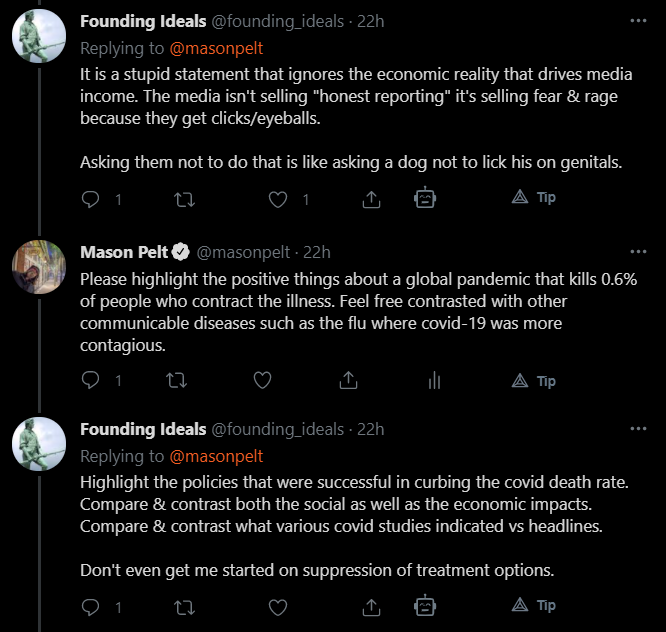
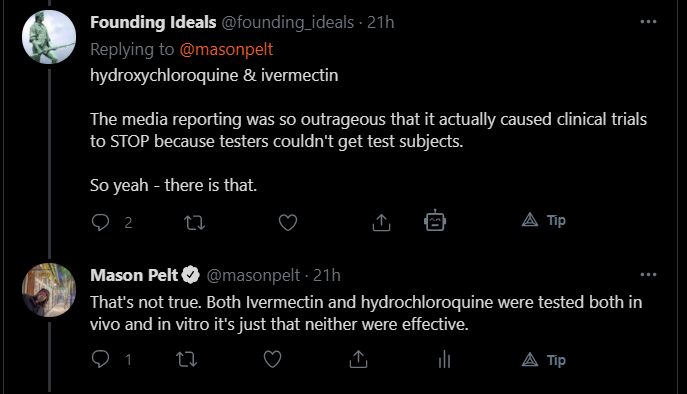
The only problem is not only are both drugs well tested, neither Hydroxychloroquine nor Ivermectin is particularly effective for treating Covid19. And that is not dishonesty on my part as I already explained on Twitter.
True some trials, like the Novartis hydroxychloroquine trials were halted due to enrolment challenges. But many trials were completed looking into Hydroxychloroquine and Ivermectin as a Covid19 treatment option.
In November of 2020 a study, from the National Heart, Lung, and Blood Institute PETAL Clinical Trials Network, focused on hospitalized patients with moderate to severe disease. The authors randomized 479 patients to receive Hydroxychloroquine. “The trial was stopped early at the fourth interim analysis for futility. For the primary outcome, clinical status at 14 days measured on a 7-category ordinal scale, there was no significant difference between the hydroxychloroquine and placebo groups”
As of now, both the U.S. Food And Drug Administration and The World Health Organization caution against the use of hydroxychloroquine for treatment of Covid19 outside of hospital settings or a clinical trial. But even now, Hydroxychloroquine is still being tested for some possible uses, like potentially decreasing hospitalization for mildly symptomatic outpatients with Covid19.
For Ivermectin, a randomized clinical trial included 476 patients and that trial determined the “findings do not support the use of Ivermectin for treatment of mild COVID19, although larger trials may be needed to understand the effects of Ivermectin on other clinically relevant outcomes.”
While the above is the most comprehensive trial of Ivermectin for treatment of Covid19 to date, it is not alone. Based on the analysis of 16 trials, The World Health Organization recommends that due to the methodological limitations of the trials thus far recorded and the low significant scene within those trials that Ivermectin not be used outside of clinical trials. Also both the U.S. Food And Drug Administration, and the European Medicines Agency specifically advise not to use Ivermectin to treat Covid19.
Even Merck, a pharmaceutical company that would make a lot of money if Ivermectin was an effective Covid19 treatment found that Ivermectin has “[n]o scientific basis for a potential therapeutic effect against COVID19 from pre-clinical studies” and “[n]o meaningful evidence for clinical activity or clinical efficacy in patients with COVID19 disease”.
However many other drug trials have continued and are continuing despite all the “negative media coverage” of Covid19. It seems unlikely that U.S. or the global public would have had effective treatment options, but for the darn media and all their “if it’s bleeding, it’s leading.”
Article by Mason Pelt of Push ROI. First published in MasonPelt.com on April 18, 2021. Photo: “COVID19 social distancing” by Open Grid Scheduler / Grid Engine is marked with CC0 1.0
